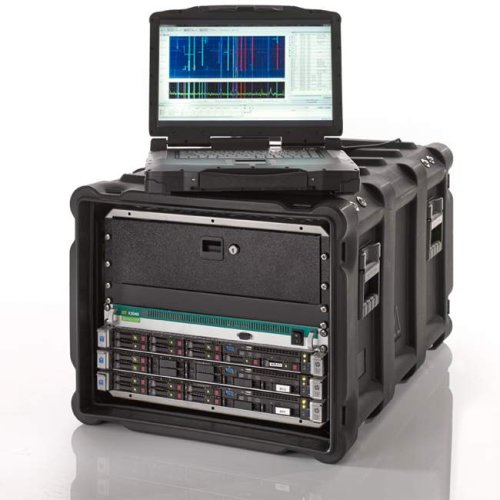News
What are server racks?
Server racks are used to house and transport technical and IT equipment. The category of server racks covers a number of varied products. It includes open or partly open framed cabinets into which mountable servers can be inserted, perhaps as part of an office’s IT infrastructure. On the other hand, server racks can also be highly secure enclosed cases suitable for transporting advanced IT and technological equipment in remote or challenging environments.
What are the different types of server rack?
Server racks come in different sizes which are suitable for different kinds of equipment and uses, with the most common standard size being 19”. However, in many cases server racks are customisable. These bespoke racks are designed to fit the specific shape and measurements of the equipment they store, while still allowing for wire connections and airflow. An example of a bespoke modified server rack would be the modular format Aeroflex ERack developed for BAE Systems and the RAF by CP Cases.
Some server racks, called open framed racks, do not enclose the equipment on all sides and therefore provide flexibility and accessibility for cables. These are often found in secure server rooms. Locked or enclosed server racks have solid sides and can be locked to provide a higher level of security. They are generally more expensive, but they can be used in non-secure locations or for transporting important equipment. Rugged rack servers are the sturdiest kind of server storage, and are often manufactured to be shock absorbent and protective.
What are server racks used for?
Server racks are used for holding technological and electronic equipment, including for IT and telecommunications. For example, this could be routers, switches, hubs and servers which make up complex IT systems like those held in data centres. Server racks have become hugely necessary in recent years thanks to technological developments around the Internet of Things and the widespread use of cloud-based solutions.
However, there are also a range of more highly specialised uses, particularly for rugged rack servers. This can include for the defence, security, oil and gas and aerospace sectors, where server racks may be required for transporting equipment over long distances and may need to be suitable for use in challenging climates and environments. In many cases, this kind of usage may require custom products, like those developed by CP Cases to hold electronic and communications equipment for the Swedish armed forces.
It’s not only defence and security forces who require secure, protective and portable server racks. Products such as the 19” Prorack, which can be enclosed on all sides for security, are used to hold equipment for industries such as music and broadcasting. These products are highly suited for use in the context of concert tours, music festivals and television productions because they provide a high level of protection while remaining relatively lightweight, and are equally suitable for use outdoors and indoors.
What are the advantages of using server racks?
Many of the benefits of server racks are specific to the contexts in which they are used and the specific kind of rack. In a data centre environment, operators rely heavily on the use of server ranks in order to store lots of servers and IT equipment in one place. Being able to stack technologies one on top of the other in a server rack reduces the floor space needed to store IT equipment, and therefore provides a cheaper solution.
Some server racks are designed to provide high levels of protection for delicate equipment. For example an Amazon Rack can provide high resistance to shock and impact while protecting delicate satellite equipment.
Server racks are designed for the storage and usage of computing and electronic equipment so they allow space for wiring, and they often have built-in cooling functions in order to keep equipment in good working condition.
How to cool server racks
One of the greatest challenges when storing large amounts of IT equipment is preventing overheating. This is particularly a concern for companies and organisations who operate in locations with hot or unpredictable climates. It’s therefore important to ensure that server racks have strong climate control features.
While some server racks may have built-in cooling systems, in many cases it’s necessary to customise or use additional equipment in order to create or enhance these features. Luckily, there are climate control systems available which can be added to server racks or used in conjunction with them in order to keep equipment in good condition.



